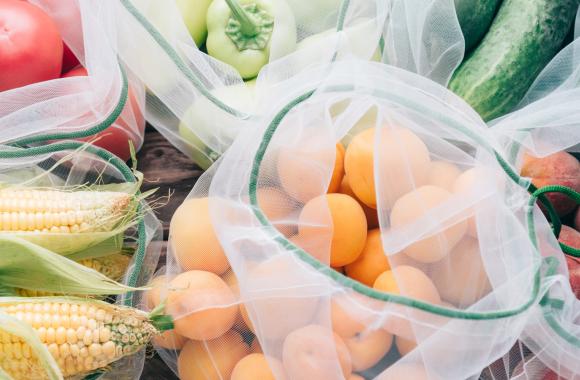Recycled Paper
Reprocessing used paper curtails extraction of virgin feedstock and lowers emissions.
Reduced/Sequestered
2020–2050
To Implement
Operational Savings
Impact
Over 30 years, recycled paper can reduce greenhouse gas emissions by 2.28–2.90 gigatons. Two key assumptions inform this conclusion: 1) recycled paper produces about 25 percent fewer total emissions than conventional paper, and 2) the percentage of paper made from recycled paper rises from 55 percent to 69–74 percent. Although recycled paper content uses more electricity, the emissions related to harvesting and processing—and the total emissions from pulping and manufacturing—are higher for paper using virgin wood feedstock. The emissions reductions do not include carbon sequestration by trees that would not be harvested if the use of recycled paper grows.
Introduction
Conventional, or virgin, paper is produced from tree pulp. Recycled paper is made, at least in part, of paper, fiber, or pulp. Recycling paper involves processes such as sorting, shredding, hydropulping, and de-inking, whereas conventional paper production involves steps such as harvesting, debarking, chipping, and mechanical or chemical pulping. Both processes use energy and emit greenhouse gases, but recycling uses less energy and results in lower greenhouse gas emissions. A piece of paper can be reprocessed roughly five to seven times before fibers are no longer viable. In addition to curbing emissions, paper recycling spares forests and reduces water use.
Paper use globally is on the rise, particularly for packaging materials. Roughly half of paper is recovered and repurposed. In some places, that recovery rate reaches 75 percent. Bringing the world up to that level can reduce greenhouse gas emissions.
Project Drawdown’s Recycled Paper solution involves the increased recovery and reprocessing of used paper into paper products. This solution replaces the use of virgin paper feedstocks.
Methodology
To arrive at the results for mitigation impact and financial considerations for recycled paper, we first forecasted total paper production from 2014 to 2050. Next, we determined the current adoption of recycled paper (defined as the amount of functional demand supplied in 2014), created future adoption scenarios of recycled paper, derived an emissions mitigation value per million metric tons of recycled paper produced, and calculated the emissions mitigated and costs compared with a reference scenario that keeps adoption of recycled paper at its current percentage of global paper adoption.
Total Addressable Market
We identified the total addressable market for paper using data from industry and academic research. The primary data source was the UN Food and Agriculture Organization (FAO, 2019), and we based some regions’ projected markets on statistical consulting company RISI, Inc.'s, paper production projections through 2030 and McKinsey & Co (2013). RISI’s statistics were not always aligned with FAO’s data; thus, we used other sources, including the Confederation of European Paper Industry (CEPI), Buongiorno’s Global Forest Projection Models, and more. We extrapolated annual growth/decline rates of each region through to 2050.
The current global recycled paper production rate is around 55 percent, with Western Europe leading with nearly 75 percent (primarily due to established infrastructure in Scandinavian countries) and India, Eastern Europe, China, and other Asian and Middle Eastern regions trailing (Buongiorno et al. 2003).
Adoption Scenarios
We created custom adoption scenarios for recycled paper by taking regional and global data prognostications as current growth rates for recycling. We considered Western Europe’s recovery rate of 75 percent to be the currently feasible maximum.
We calculated impacts of increased adoption of recycled paper from 2020 to 2050 by comparing two scenarios with the reference scenario.
- Scenario 1: 499.04 million metric tons of recycled paper are produced, which is 64 percent of the market. We based this on a low-growth-trend best fit analysis of the custom adoption scenarios, chosen due to the highly uncertain nature of the paper market beyond 2030, especially in emerging markets.
- Scenario 2: 543.73 million metric tons of recycled paper are produced. Here, adoption is accelerated after 2020 to the high-growth-trend best fit line and then capped at 70 percent of the market.
Emissions Model
Climate inputs analyzed included direct and indirect carbon dioxide emissions for recycled and conventional paper products. The unit of measure was metric tons of carbon dioxide equivalent produced per metric ton of paper produced. Data from outside North America, the Netherlands, Norway, Sweden, and parts of Europe were not available for emissions calculation. We analyzed emissions due to paper manufacturing as direct emissions and emissions from all other life-cycle stages of virgin and recycled paper production as indirect emissions.
Life-cycle analyses trace the amount of emissions from a product’s “cradle” to “grave.” Emissions could be attributed to the initial timber harvest or to processing, transportation, consumption, or disposal. Some sources attempted to trace these emissions through every process, while others only measured emissions at the manufacturing stage (i.e., when mills receive pulp and process it to produce recycled or virgin paper). Modeling emissions associated with paper and paper-making, such as deforestation or carbon sequestered as a result of recycled paper, was outside the scope of the analysis.
Financial Model
Financial research focused on the first costs of purchasing paper by the consumer. In this case, the agent considered was a US-based paper consumer, and the first costs were those that an individual would face when purchasing recycled rather than conventional paper products. Due to the variety of paper products and the differences in grades and qualities, we made several assumptions. We used a market spot check of uncoated office/copy paper as our primary price marker, then added different types of paper to generate a more realistic overall price.
Results
All monetary values are presented in 2014 US$.
The total carbon dioxide-equivalent reductions for Scenario 1 are 2.28 gigatons. Scenario 2 shows a mitigation of 2.90 gigatons. Net first benefits to implement are US$1.62 trillion and US$1.44 trillion, respectively. Lifetime net operational savings for both scenarios are US$0.
Discussion
Producing a metric ton of recycled paper produces on average 0.15 metric tons of carbon dioxide equivalent less than producing a metric ton of virgin paper. Thus, it is a climate reduction solution to be considered. Global paper production and consumption is predicted to rise globally, especially in emerging economies where paper and packaging is in high demand. However, several developed economies are gradually reducing paper production and consumption rates due to decreasing stocks of virgin source materials, as well as decreased demand due to the substitution of electronic media, especially in its role of replacing newsprint. The growth of electronic media will play a very important part in the paper industry’s future. The potential for recycled paper as a material reduction solution depends on the growth of the paper market globally, as well as on changes in consumer preferences and cost.
References
Buongiorno, J., Zhu, S., Zhang, D., Turner, J., and Tomberlin, D. (2003) The Global Forest Products Model: Structure, Estimations, and Applications. Academic Press.
McKinsey & Co (2013). Nordström, P. and O’Kelly, G. (2013). Tighter recycled fiber markets: Softwood strikes back! | McKinsey & Company. McKinsey & Company. URL: http://www.mckinsey.com/industries/paper-and-forest-products/our-insights/tighter-recycled-fiber-markets
Food and Agriculture Organization of the United Nations (FAO). (2019) The Pulp and Paper Capacities Survey (English/French/Spanish edition). Food and Agriculture Organization of the United Nations. Accessed at https://www.fao.org/forestry/statistics/80571/en/
What You Can Do
Make sure your office, school system, place of worship, etc., recycle paper.
Do recycling one better! Enroll in electronic options for bank statements, charitable solicitations, etc., to reduce paper-based mail.
- Expand your knowledge by exploring another Drawdown solution.
Co-benefits
By reducing demand for tree harvesting, paper recycling makes it possible to maintain more habitat and recreation land.










